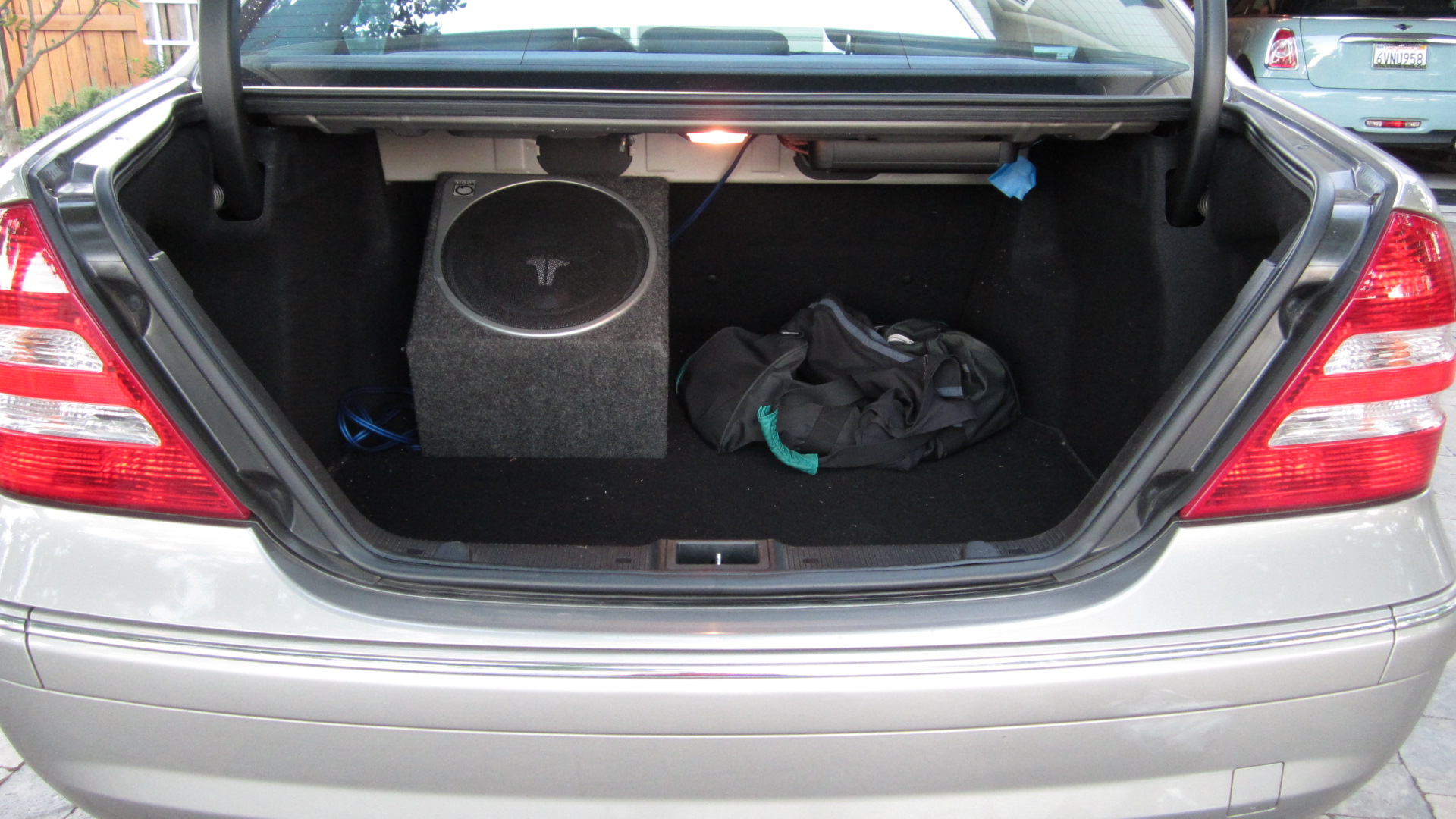Mercedes W203 Subwoofer Installed

Mar 10, 2018 - Mercedes Benz C Class w. How to Install Amplifier. This how to will guide you through the installation of an aftermarket amplifier.
Mercedes Benz W203 Rear Door Trim Removal / W203 Rear Speaker Replacement The original fitment speakers in the rear of a typical W203 (without the premium audio option), are Hungarian built 5.25 inch single cone speakers. My left – rear speaker tore the diaphragm and started distorting at any volume. Most W203 owners could tell you that the original rear speakers bottom out even under the lightest loads anyway, so replacing these was the first logical step for Jarvis’ audio enhancement project. Some purists out there will reject my choice of speaker, however when you consider the quality vs cost, these Sony 6 inch 3-way 40watt units for $33 a pair are hard to beat. I would love a pair of Alpine’s or Focal’s however my budget did not allow it.
Tools Required: Medium Flat Head Screw Driver Torx Drivers of various sizes (15, 20, 25) Door Trim Removal Tool (Flat piece of rigid plastic) Drill with various drill bits Possibly a 10mm spanner Torch Step 1: Disconnect the battery. As we are working in an area with airbags, disconnect the battery and allow the vehicle to stand for about 20 minutes to ensure any residual charge is dissipated. Eminem live from new york city download cd.
(Handy hint, most Mercedes Benz bonnet struts can be extended via the red button on the left side, this will allow you better access to the battery). Remove the air-con filter assembly via the three clamps across the top, then remove the ground (-) terminal. Step 2: Remove the door trim and miscellaneous pieces Start with the door latch cover. One Torx bolt, and pull the piece down and outward. Keep an eye on the tab on the top of this piece when reassembling, it needs to sit behind the sheet-metal. Next use a trim removal tool to dislodged the SRS Airbag plate and the Torx bolt behind it.
Use a flat head screw driver to pry the pull handle cover away from the handle, start at the bottom and work carefully upward, the little tabs that hold it on a rather delicate. Then remove the two Torx bolts from top and bottom of the handle. Then start to pry the door card away from the door.
Start near the door latch as it will be easier to pull away while getting your trim tool underneath. Search around for the clips, there may be around 5 or so (I didn’t keep count), they will make a pop when successfully removed. You can see the white clips in the next photo: Once all the clips and bolts are removed, swing the door card out from the bottom and gently wriggle upward. There is a metal retainer running along the bottom of the window connected to the rubber, mine had never been removed before and was rather grippy. Just keep wriggling and applying force upward, it will eventually shift of, it should not make any loud noises at this point.
Next, disconnect the wiring harness from the window switch, and the door latch cable. Pull the cable out from the retainer, then lift the hook up out of the clip. You have now successfully removed the entire door card, and things should look like this: Step 3: Remove the speaker assembly! This is rather simple, 3 Torx bolts and a wiring harness. You may find that the spacer is sort of stuck to the sound deadening, wriggle it free and try not to tear the deadening. There are many forums out there that argue what you can put in this space. Let me be perfectly clear here: with a 1 inch spacer, you can get something up to 3 inches deep and 6.5 inch diameter.

As my local audio store was having a massive sale on old stock, and my budget is rather tight, I went for a speaker that I’ve used before in previous projects. Cost me AU$33 for the pair, handle 40w, and sound significantly better than the 5.25 inch speakers factory installed. Step 4: Plan out and install the speaker spacer, wiring harness, and speaker. I used a carpeted 1 inch thick spacer that can handle a 6.5 inch speaker (even though what I put in it are only 6 inch). This will give me freedom to upgrade in the future if required, and I can use the original mounting points already installed in the sheet metal.